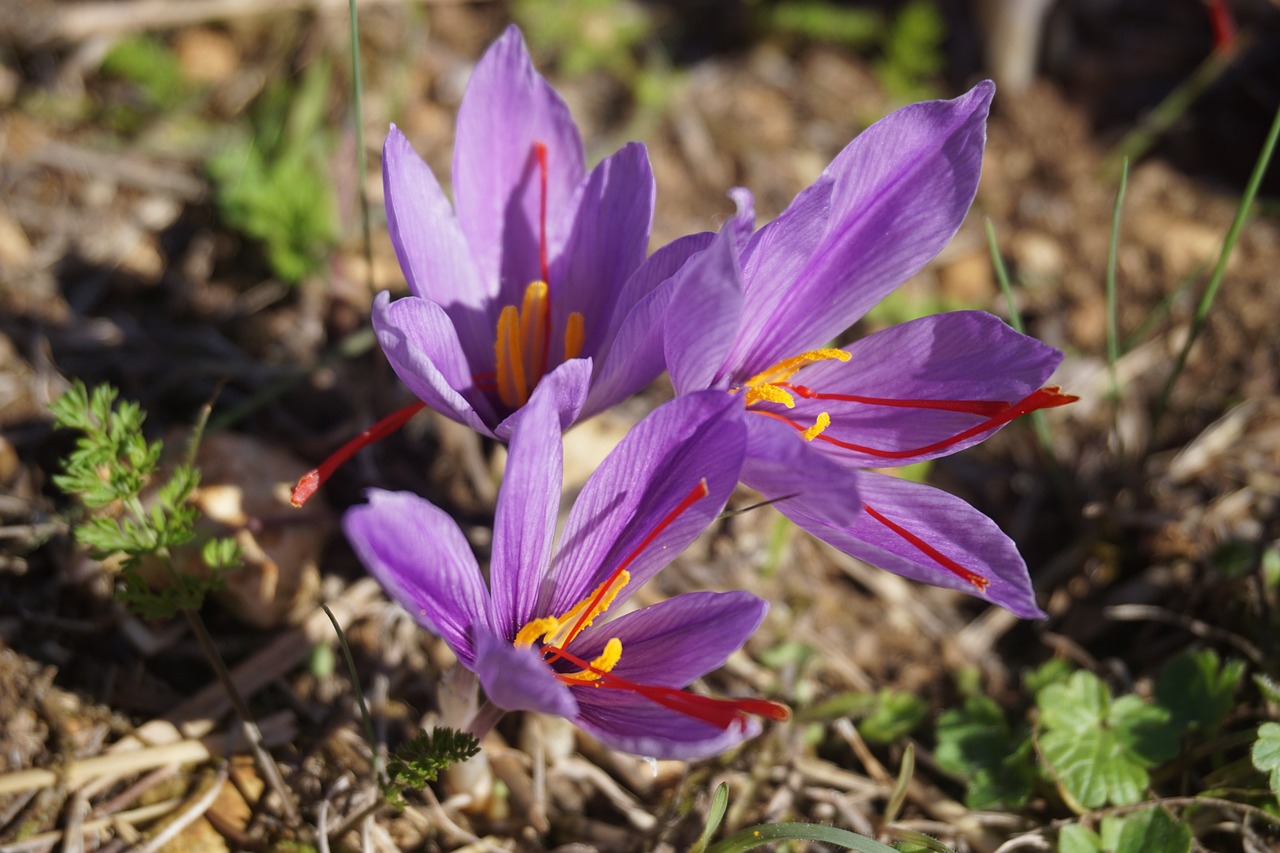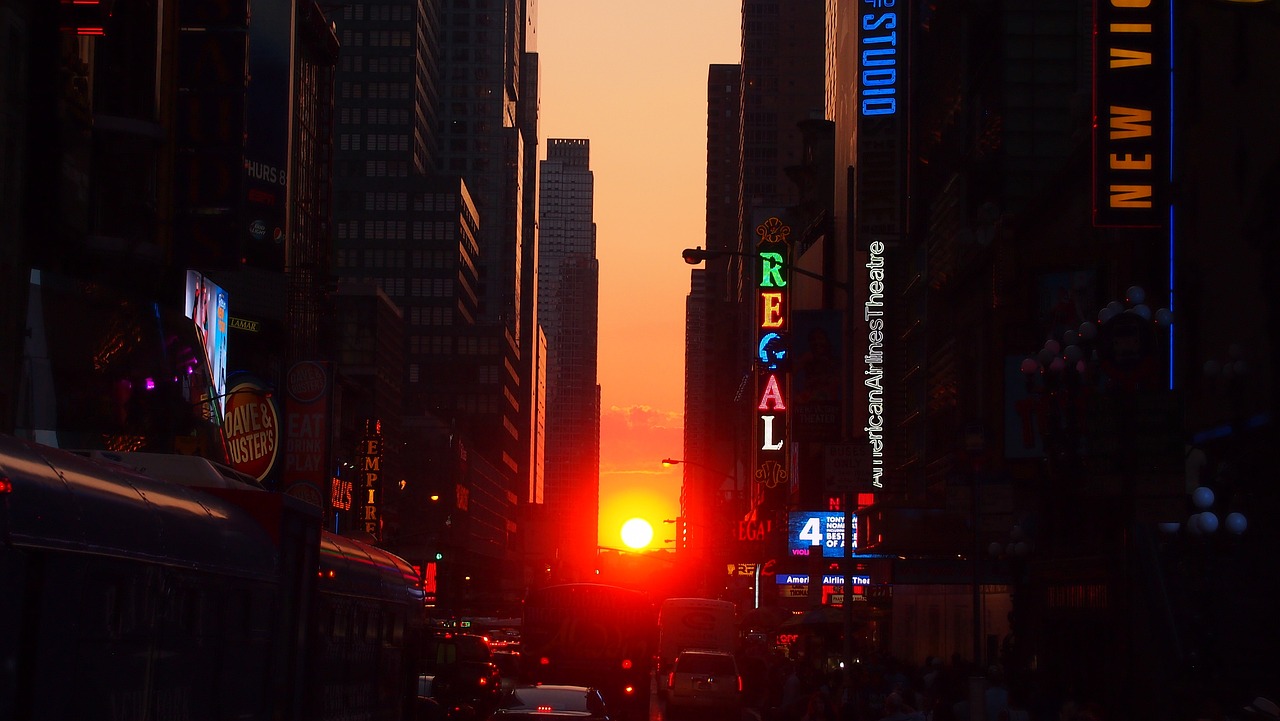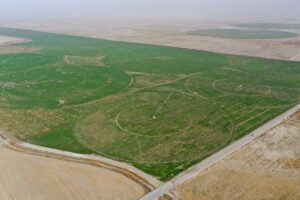 Pin
Pin Photo Courtesy of George
Suloszowa, a picturesque village in southern Poland, has quietly gone viral for its unusual layout. Unlike any typical town or suburb, almost every resident lives along a single, winding road that stretches for nearly 9 kilometers. This one-road layout makes it one of Poland’s most fascinating linear settlements—and yes, that’s not just a title for show. It’s real, stunning, and oddly satisfying to look at.
This village, often called “Little Tuscany” due to its colorful landscape and rolling green fields, is home to around 5,800 people. You get to see homes perfectly aligned on both sides, each with their own narrow strips of farmland stretching far behind. The result? An almost hypnotic view from above—a living barcode of crops, colors, and rooftops.
Table of Contents
A Drone’s Eye View: Why Suloszowa Keeps Going Viral
 Pin
Pin Photo Courtesy of George
At first glance, Suloszowa looks like just another quiet rural village in Europe. But once you see it from above, something clicks—this place is different. The view from a drone or satellite reveals a stunning alignment of houses along the 9-kilometer road, each paired with narrow agricultural strips like lines on a perfectly ruled notebook. It’s almost like the village was drawn with a ruler.
This unique view has made Suloszowa a social media favorite. You’ll find it in viral YouTube clips, Reddit threads, and Instagram reels where people can’t stop commenting on how “oddly satisfying” the layout is. It’s not just a gimmick either. The layout wasn’t designed for aesthetics—it’s a centuries-old land division system that stuck around because it worked.
Each home backs onto its own long farming plot, which keeps ownership simple and family-based. The symmetry isn’t man-made for the camera—it’s natural, generational, and practical. That’s what makes it oddly beautiful. It wasn’t made to impress. It just does.
The History Behind Suloszowa’s Linear Layout
Suloszowa’s straight-line layout isn’t just a modern-day curiosity—it’s the result of centuries of tradition and practicality. Back in medieval times, this kind of layout made it easier for villagers to divide land fairly. Each family received a strip of land that extended directly behind their house, making farming more accessible and reducing conflict over boundaries. Over the years, this structure stayed intact because it just made sense.
Unlike towns that expanded in all directions, Suloszowa grew along a single spine. The main road became the heart of everything—transportation, trade, and daily life. If you live here, your world revolves around that one road. The school, church, shops, and neighbors are all within walking distance, arranged neatly in a straight line.
This type of village is rare today, but it tells a powerful story. It reflects how people lived in tune with their environment, respecting land, resources, and community life. In a way, it’s a living museum—but with real families, farms, and traditions still going strong.
Daily Life, Community & Challenges in Suloszowa
Life in Suloszowa revolves around that single long street—the pulse of everyday routines. Shops, a bakery, a bank, a clinic and even a school all sit along that stretch, within walking distance for most families . It’s easy to run into your neighbors when walking down the road, and the layout fosters a strong sense of belonging.
The community hosts seasonal traditions like Strawberry Day and Potato Day, when families gather for fresh produce, music and fun—it’s tradition with real heart . A regular Seniors’ Club also meets at the community center, offering social support and lively conversation .
But there are downsides too. With homes stretching far apart lengthwise, trips to distant neighbors or the bus stop can feel long—sometimes requiring a car or a walk of several kilometers . Pub culture is limited—there’s no local nightlife to speak of, forcing younger folks to drive elsewhere . This lack of entertainment options, combined with easy land inheritance division, has contributed to youth moving to cities—leading to gradual depopulation . The warmth of community stands tall, but the challenge of keeping it alive is growing.
Why Tourists Can't Get Enough of Suloszowa
Tourists flood to Suloszowa not just for the novelty, but for the stunning surroundings that frame it perfectly. The village sits right by Ojców National Park, a compact but remarkable reserve filled with limestone cliffs, over 400 caves, and rare wildlife—including bats, badgers, and beavers . Within its borders is the must-see Pieskowa Skała Castle, a Renaissance gem built in the 14th century, part of Poland’s famous Eagle’s Nests defensive route .
Towering nearby is the Maczuga Herkulesa, or “Hercules’ Bludgeon,” a 25- to 30-meter high limestone pillar that looks sculpted by giants . Hiking trails like the Eagle’s Nests route wind through the area, linking the castle, the rock, and scenic panoramas, making Suloszowa a natural base for day-trippers. People come with cameras, trekking boots, and picnic baskets, ready for small village charm and easy access to wild, rugged beauty.
One drone-snapshot caption summed it best: “billowing ribbons of… fields stretching out… forming living art in the surrounding countryside” . If you’re hunting for a photo-worthy location that’s peaceful yet dramatic, Suloszowa has it all—gravity-defying rock, centuries-old fortress, and that one beautiful ribbon of a village street.
Depopulation & Hope in Suloszowa
Suloszowa’s charm is undeniable, yet beneath its scenic calm lies a pressing issue: many young residents are moving away. With limited job options, sparse nightlife, and few higher education opportunities in the village, it’s no surprise that youth often take the bus or train to Kraków or Olkusz whenever they can. This trend isn’t just anecdotal—Poland’s rural-urban migration pattern reflects it clearly, and villages like Suloszowa are no exception.
Still, the village isn’t giving in so easily. Some locals and the Gmina Sułoszowa council are working hard to build tourist-friendly services—guest houses, bike rentals, and improved signage for hiking routes that connect to the Eagle’s Nests Trail. During Strawberry and Potato Days, you’ll see families showcasing their harvest, sometimes inviting visitors in from as far as Kraków.
By turning their unique arrangement into an asset—vibrant aerial views, rural heritage, and easy access to Ojców National Park—residents are finding new purpose. It’s still early days, but hope floats in the long, narrow fields that stretch behind each home, quietly reminding everyone that tradition and revival can coexist.
How the “One-Road Life” Shapes Identity in Suloszowa
Living in Suloszowa isn’t just about geography—it’s about mindset. When your entire village stretches along one road, everything becomes visible. You know who just bought a new tractor, who got a fresh coat of paint on their house, and who’s walking their dog at 7 p.m. There’s little room for anonymity here—and for many, that creates a sense of security and familiarity.
But that closeness has a flip side. Some residents have openly mentioned how gossip travels faster than cars, and how privacy can feel like a luxury. Young adults often say it’s hard to carve out personal space in a place where everyone knows your story before you even tell it.
Yet, for many older residents, this tight-knit setup is part of their identity. It means neighborly help during winter snow, shared celebrations, and a community that truly feels like family. The road isn’t just a route—it’s a lifeline that carries generations of shared memories, routines, and resilience.
Farming Life in Suloszowa: More Than Just Tradition
The narrow strips of land that stretch out behind each home in Suloszowa aren’t just pretty for drone shots—they’re working fields. Most families still grow potatoes, grains, and strawberries, using methods passed down for generations. Farming here isn’t industrial; it’s deeply personal. You’ll find elderly villagers tending to plots at sunrise and children helping during harvest season. It’s a rhythm that defines life in this village.
What’s interesting is how land ownership still follows those historic divisions—long, slim plots that align with the original family homesteads. It’s efficient and symbolic. Many of these plots have been passed down for hundreds of years. Even if the younger generation moves away, they often keep the land, sometimes returning just for the growing season.
In recent years, there’s been a slow shift toward eco-farming and small-scale agritourism. Some families offer “farm stays” or invite tourists to help during strawberry season. For visitors, it’s a chance to taste real village life. For locals, it’s a way to keep the land alive—with both tradition and a bit of innovation.
Architecture and Aesthetics: Simple Yet Striking
Walk down Suloszowa’s 9-kilometer main road and you’ll notice something quietly beautiful: no flashy buildings, no high-rises, no chaotic mix of styles. The homes are modest, mostly single or two-story houses, built with functionality in mind. Yet, there’s a clear sense of pride in how they’re maintained—painted walls, neat fences, flower boxes in windows. It’s rural charm with a subtle personal touch.
What really stands out is how consistent everything feels. Since the village layout hasn’t sprawled outward like most places, each home follows the natural rhythm of the road. It creates a flowing visual harmony that’s hard to find in modern towns. And then there’s the backdrop: fields stretching endlessly behind each house, with changing colors every season—greens, yellows, reds—that turn the village into a living canvas.
Some newer homes have adopted modern elements like solar panels or minimalist facades, blending old with new. But even with change, the spirit remains rooted. It’s not showy architecture—it’s honest, grounded, and surprisingly photogenic.
FAQs
Suloszowa is called Poland’s longest linear village because nearly all of its ~5,800 residents live along a single, 9-kilometer-long road. The houses are built in a straight line with narrow farming plots extending behind each one, creating a rare and visually striking village layout. This unique arrangement makes it one of the most remarkable linear settlements in Europe.
Suloszowa gained popularity online due to drone footage showing its beautiful, symmetrical layout from above. The aerial view reveals colorful farm strips that create a patchwork effect, attracting viewers worldwide. The village’s nickname “Little Tuscany” also adds charm, making it a favorite for travel influencers and landscape enthusiasts.
Top attractions near Suloszowa include Ojców National Park, known for its caves and wildlife, Pieskowa Skała Castle, a stunning Renaissance fortress, and the iconic Maczuga Herkulesa rock formation. Hiking trails like the Eagle’s Nests route also pass through the area, making it perfect for nature and history lovers.
Suloszowa hosts community events like Strawberry Day and Potato Day, which bring together residents for food, fun, and local pride. These celebrations often include markets, music, and family activities that showcase the agricultural traditions and tight-knit spirit of the village.
Yes, like many rural areas in Poland, Suloszowa is experiencing depopulation. Many young people leave the village to pursue education and job opportunities in larger cities. However, efforts like promoting tourism and local agriculture are helping to bring attention and hope to the village’s future.































